This Paris exhibition of hanging abstract sculpture has just the right element of suspense
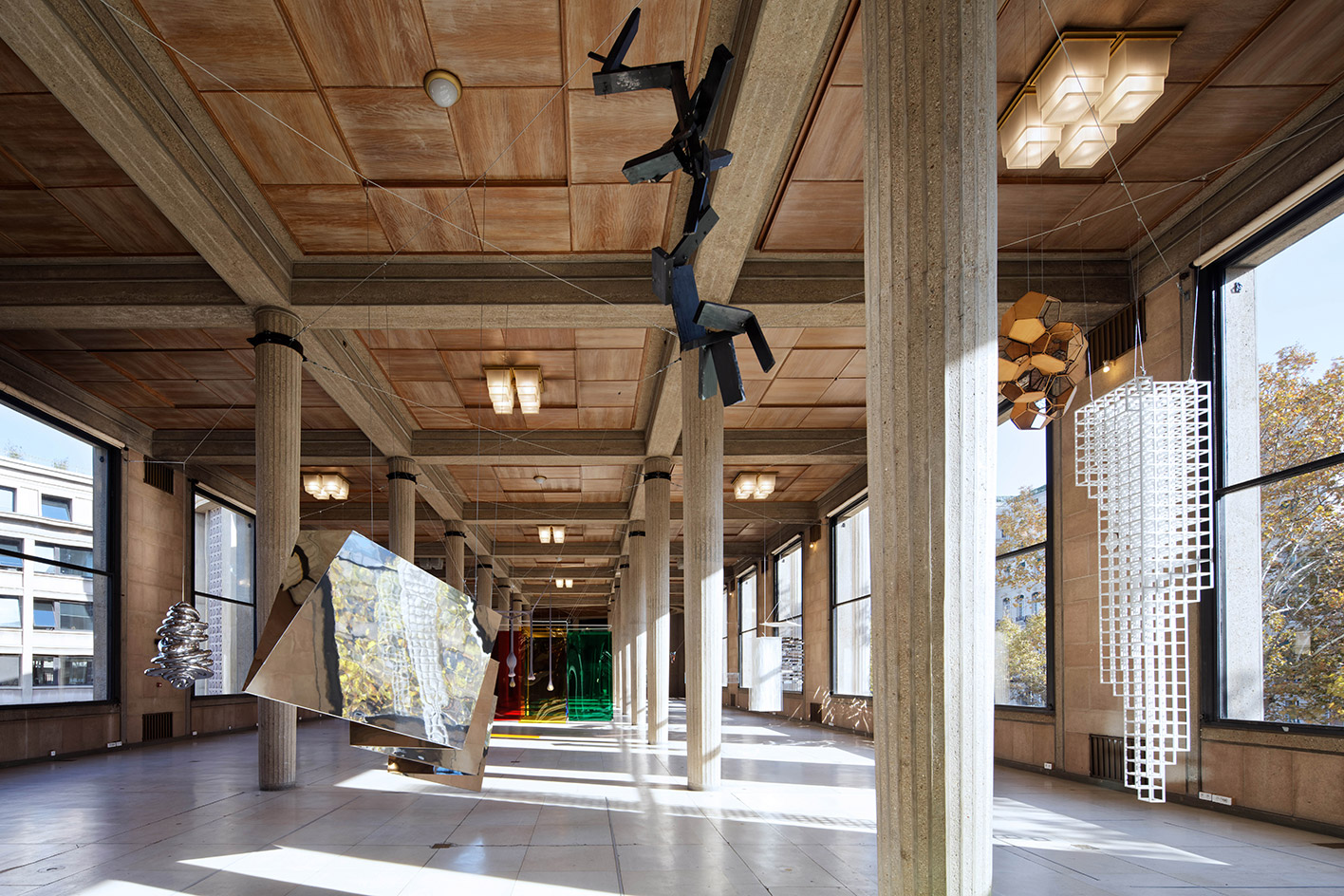
Look up. Inside the exceptional interiors of Palais d’Iéna, designed by Auguste Perret in the 1930s, a unique collection of abstract sculptures stands the test of time, elegantly hanging from the art deco ceiling. Handpicked by brilliant, young curator Matthieu Poirier and unveiled during FIAC, the exhibition presents a century of abstract sculpture up to present day through the perspective of aerial suspension.
First explored by artists in the 1910s, one comes across three fascinatingly enigmatic Hanging Spatial Constructions created by Alexander Rodchenko. On each side, conceptual works by Man Ray and Marcel Duchamp – respectively made out of hangers and colourful shreds of latex balloons – make for a strong opening statement. Not far, one of Calder’s ‘mobiles’ cast a new light on the young discipline.
In 1931, Duchamp himself uses the word ‘mobile’ to describe Calder’s first sculptures; he insists that the piece is ‘animated’ by invisible forces and reveals the movement of the air. The 1950s are all about movement and kinetic with unique works by Soto, François Morellet, Gego or Julio Le Parc that challenge the perception of the seen object.
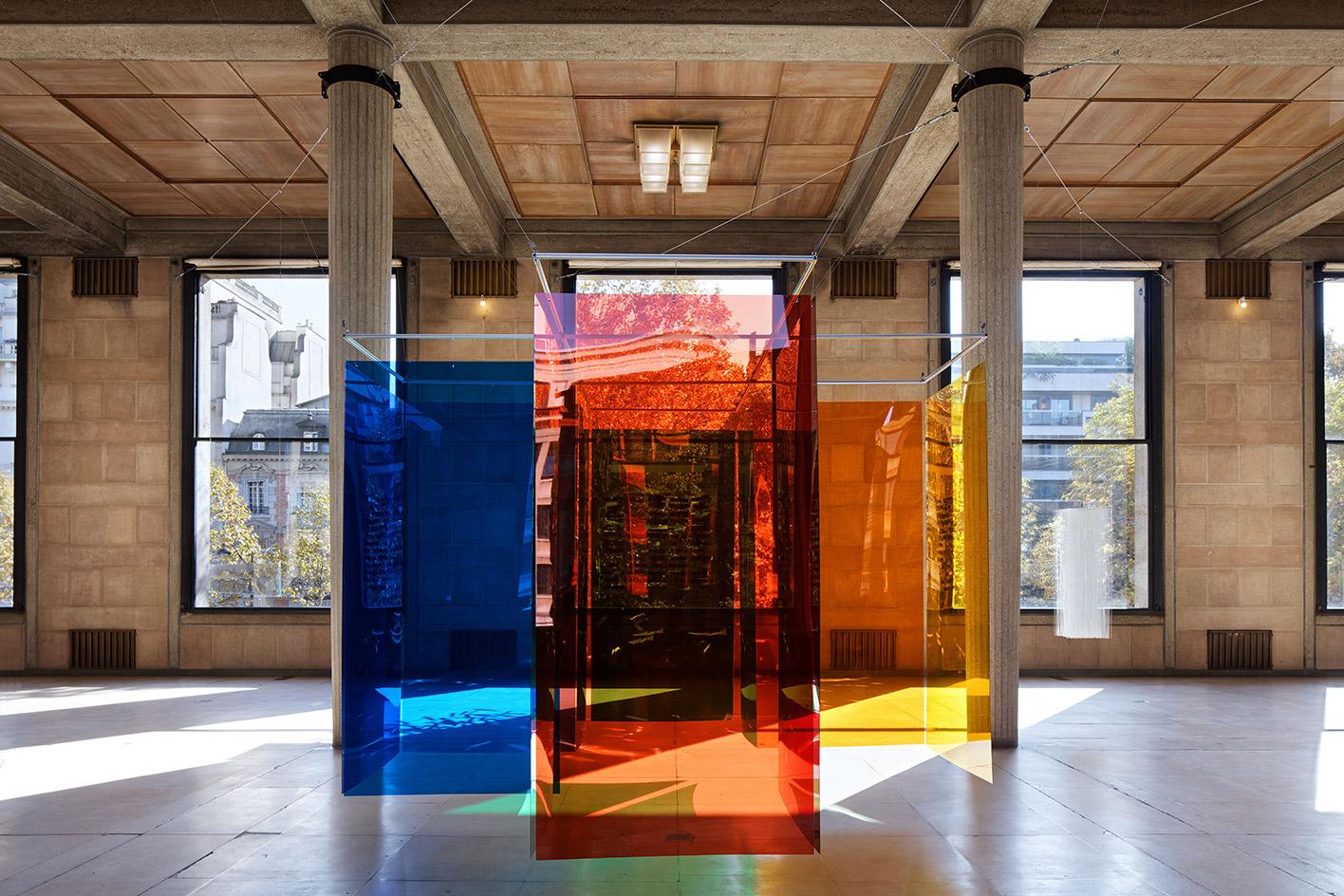
Labyrinthe de Transchromie B, Paris, 1969/2017, by Carlos Cruz-Diez. © Cruz-Diez and Adagp, Paris 2018
The eye is constantly rediscovering the intricate lines and perspectives as if the sculpture had many forms. Little by little, the sculptural materiality of the sculptures eases up, becomes lighter. ‘The contours of the forms, launched into orbit, indicate a desire to escape gravity or fight it,’ Poirier explains pointing at Yves Klein’s Blue Planet (Relief Planétaire bleu sans titre). Sol Lewitt’s Inverted Spiralling Tower and Antony Gormley’s Fall III seem to be cascading down from the ceiling with an unmatched weightlessness.
‘Over time, what the sculptures loose in mass, they gain in transparency and balance, structure and sometimes even in physical mobility,’ adds the curator. Contemporary works by Xavier Veilhan, Ernesto Neto, Tomás Saraceno or Olafur Eliasson play with materiality: the artists use nets, steel threads, carbon, weathered wood and magnets to imagine new, spatial works of art. Uplifting!
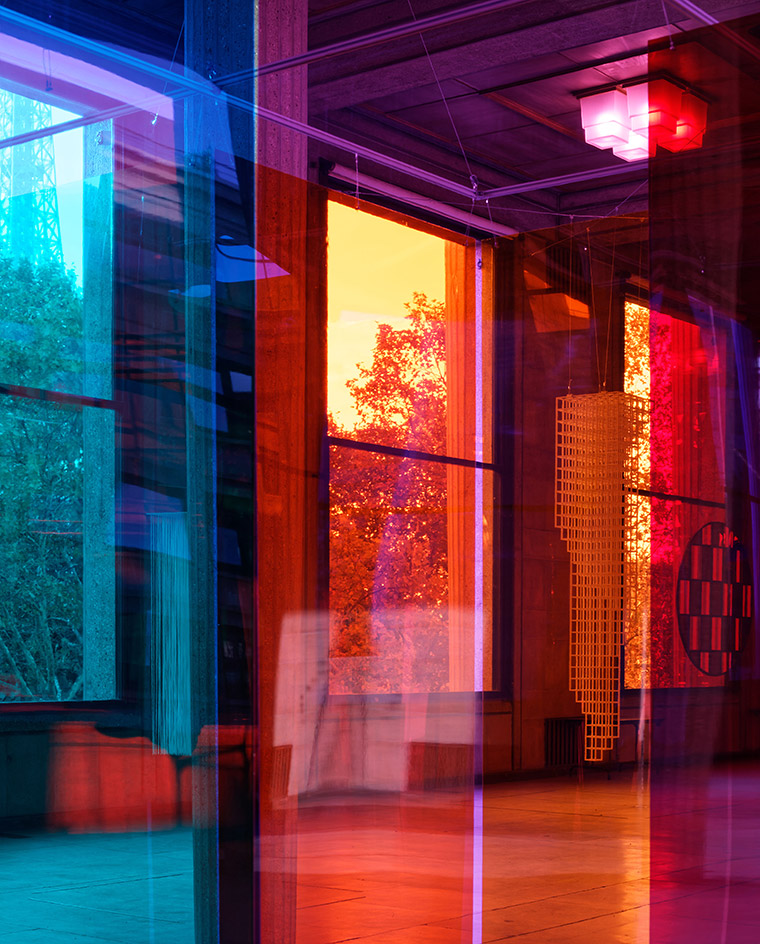
Detail of Labyrinthe de Transchromie B, Paris, 1969/2017, by Carlos Cruz-Diez.© Cruz-Diez and Adagp, Paris 2018
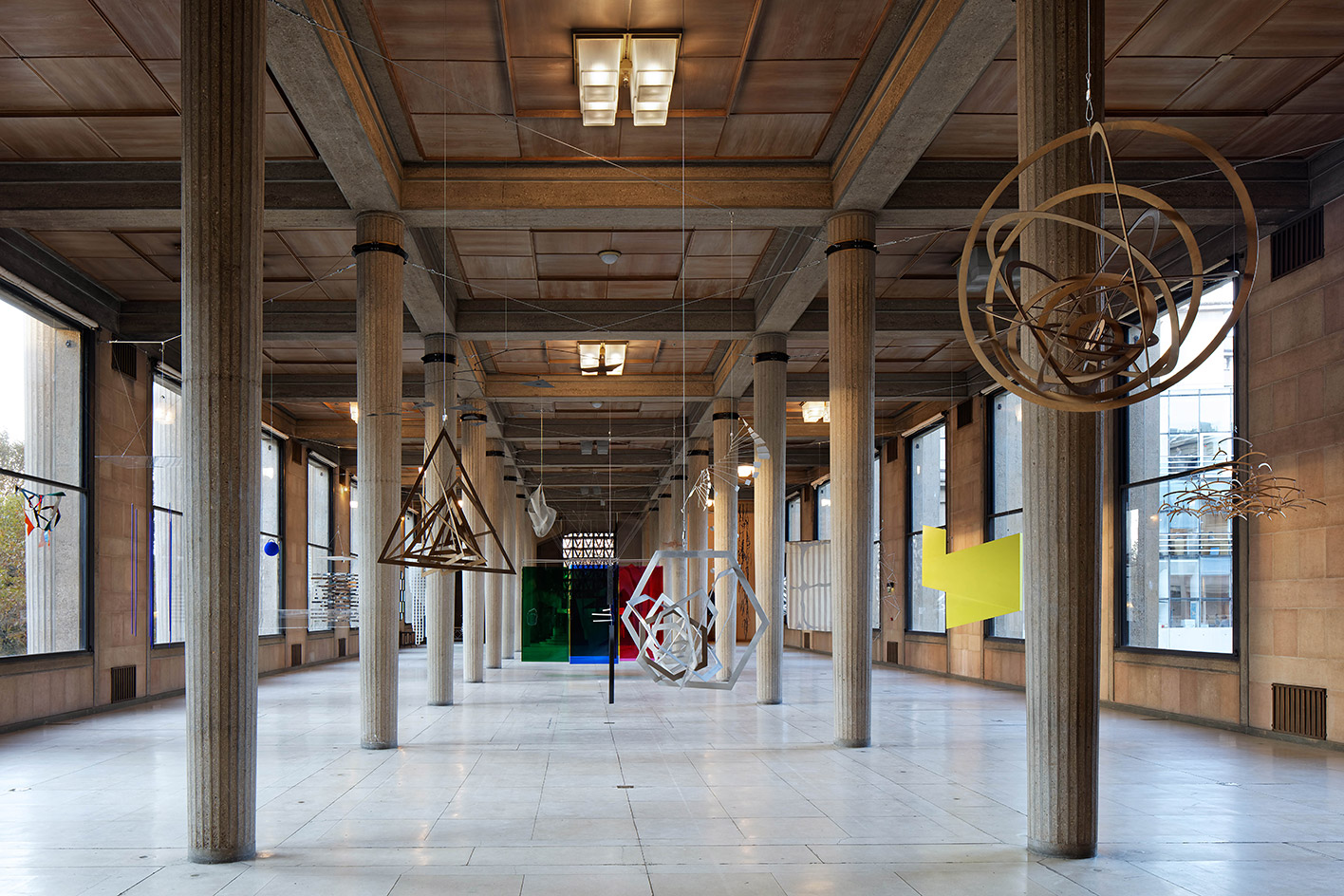
Installation view of ‘Suspension: A History of Abstract Hanging Sculpture 1918-2018’ at Palais d'Iéna, Paris.
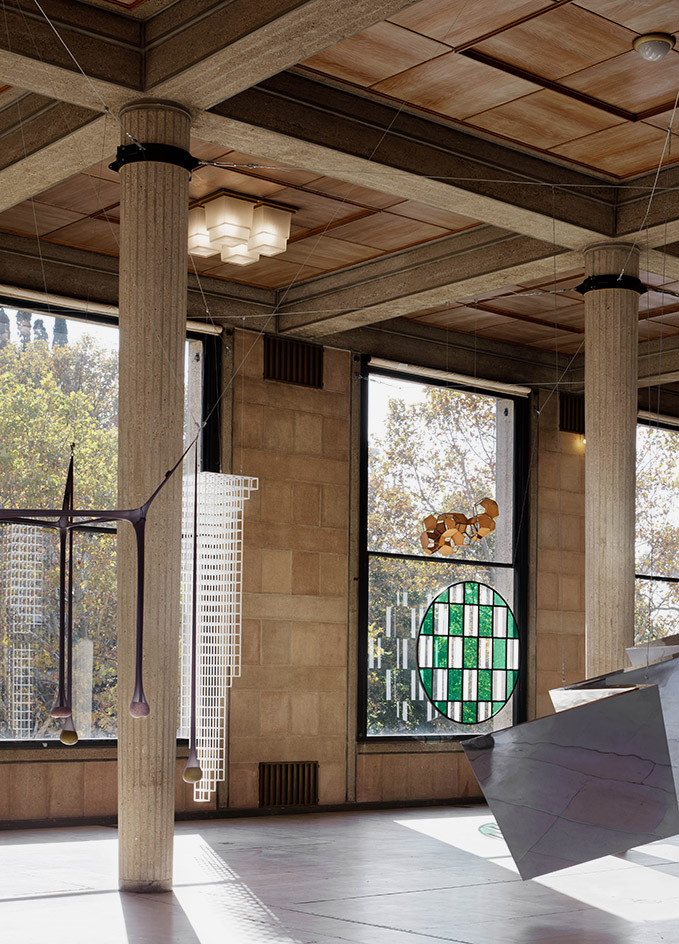
Installation view of ‘Suspension: A History of Abstract Hanging Sculpture 1918-2018’ at Palais d'Iéna, Paris.
INFORMATION
‘Suspension: A History of Abstract Hanging Sculpture 1918-2018’ is on view until 28 October. A further selection of hanging abstract sculpture is on view at Olivier Malingue, London, until 15 December. For more information, visit the Olivier Malingue website
ADDRESS
Palais d'Iéna
9 Avenue d'Iéna
75016 Paris
Receive our daily digest of inspiration, escapism and design stories from around the world direct to your inbox.
-
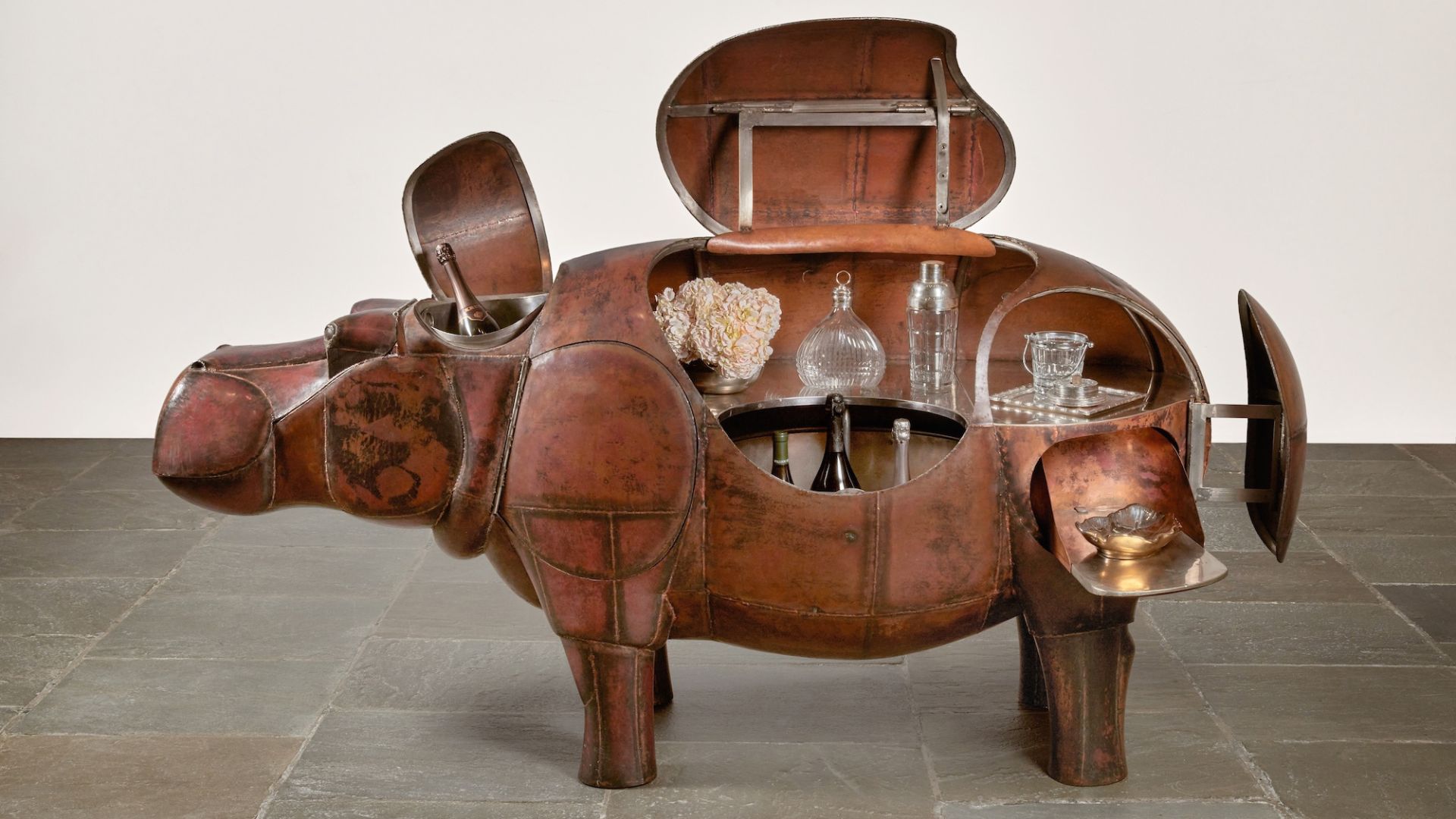 At $31.4 million, this Lalanne hippo just smashed another world auction record at Sotheby’s
At $31.4 million, this Lalanne hippo just smashed another world auction record at Sotheby’sThe jaw-dropping price marked the highest-ever for a work by François-Xavier Lalanne – and for a work of design generally
-
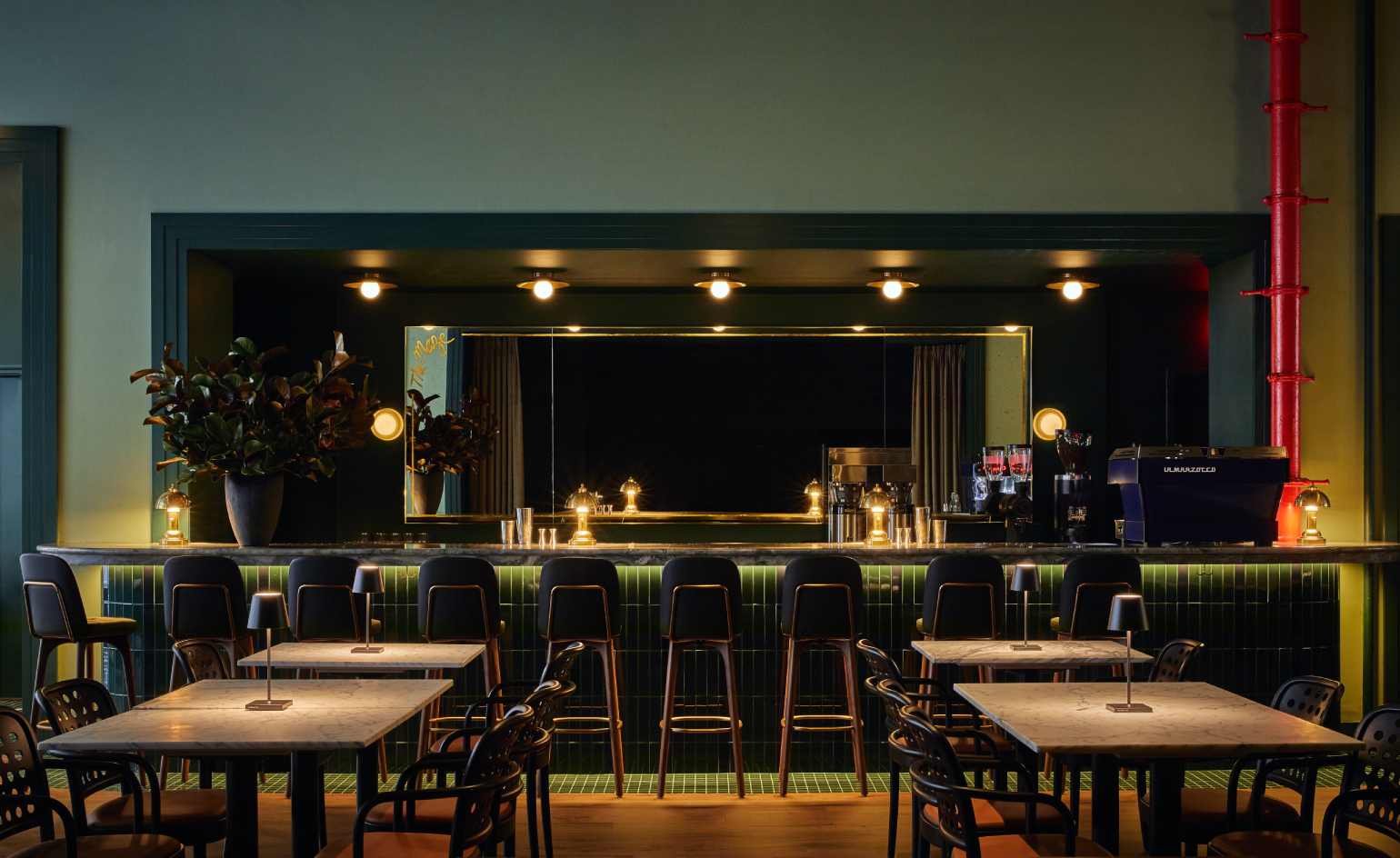 NYC’s first alcohol-free members’ club is full of spirit
NYC’s first alcohol-free members’ club is full of spiritThe Maze NYC is a design-led social hub in Flatiron, redefining how the city gathers with an alcohol-free, community-driven ethos
-
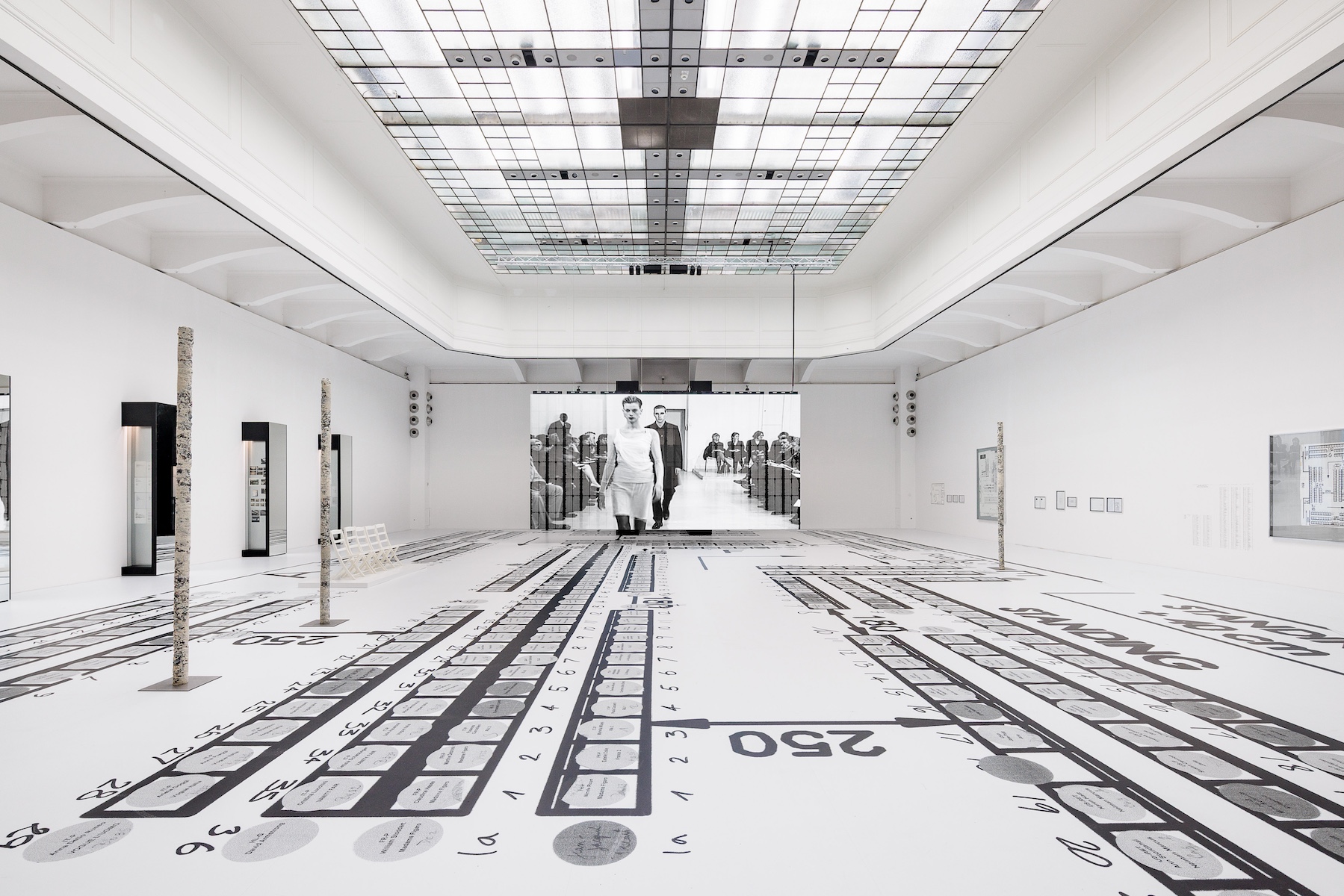 Inside Helmut Lang’s fashion archive in Vienna, which still defines how we dress today
Inside Helmut Lang’s fashion archive in Vienna, which still defines how we dress todayNew exhibition ‘Séance de Travail 1986-2005’ at MAK in Vienna puts Helmut Lang’s extraordinary fashion archive on view for the first time, capturing the Austrian designer-turned-artist’s enduring legacy
-
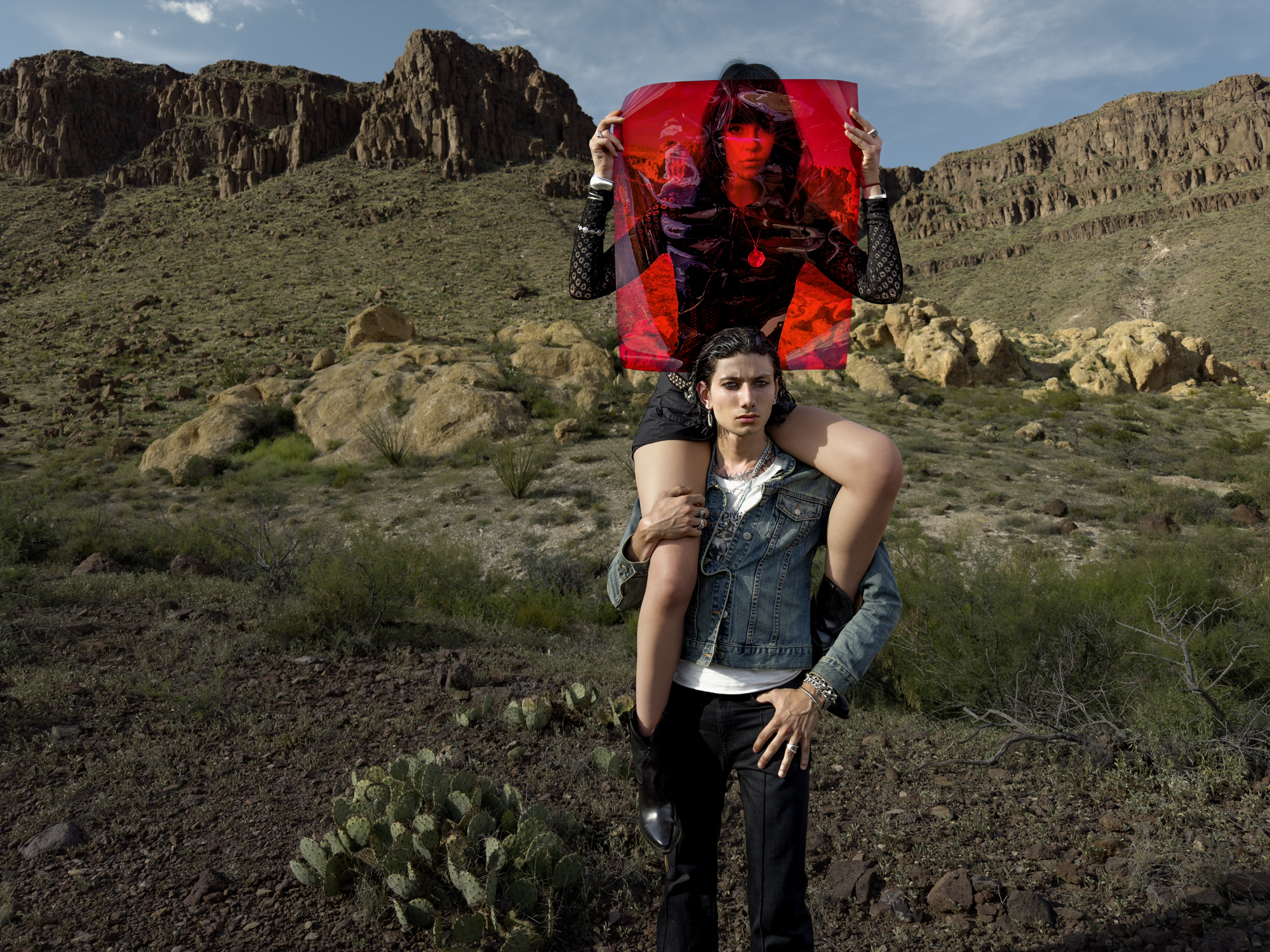 Inez & Vinoodh unveil romantic new photography series in Paris
Inez & Vinoodh unveil romantic new photography series in ParisA series of portraits of couple Charles Matadin and Natalie Brumley, created using an iPhone in Marfa, Texas, goes on show in Paris
-
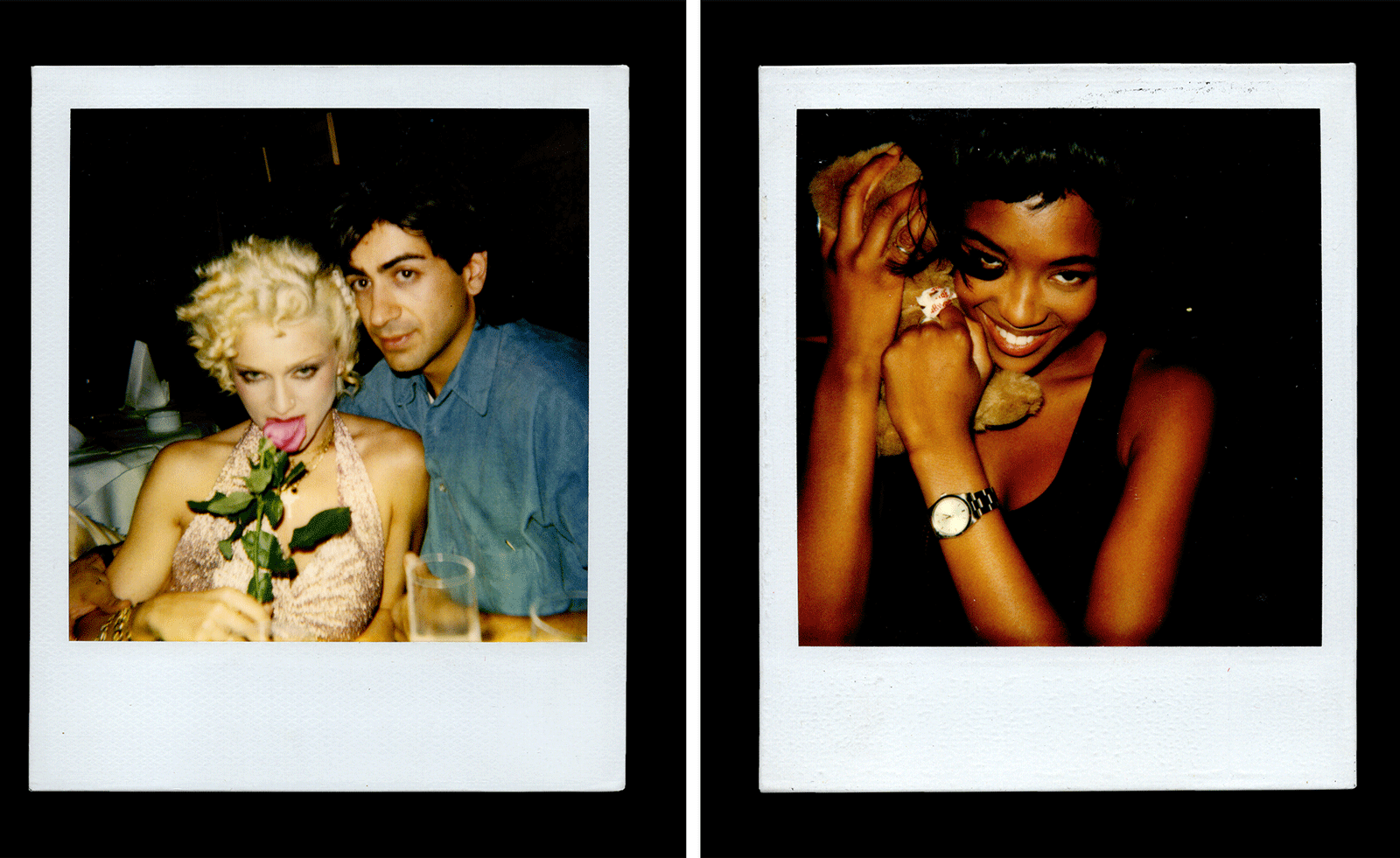 Inside Davé, Polaroids from a little-known Paris hotspot where the A-list played
Inside Davé, Polaroids from a little-known Paris hotspot where the A-list playedChinese restaurant Davé drew in A-list celebrities for three decades. What happened behind closed doors? A new book of Polaroids looks back
-
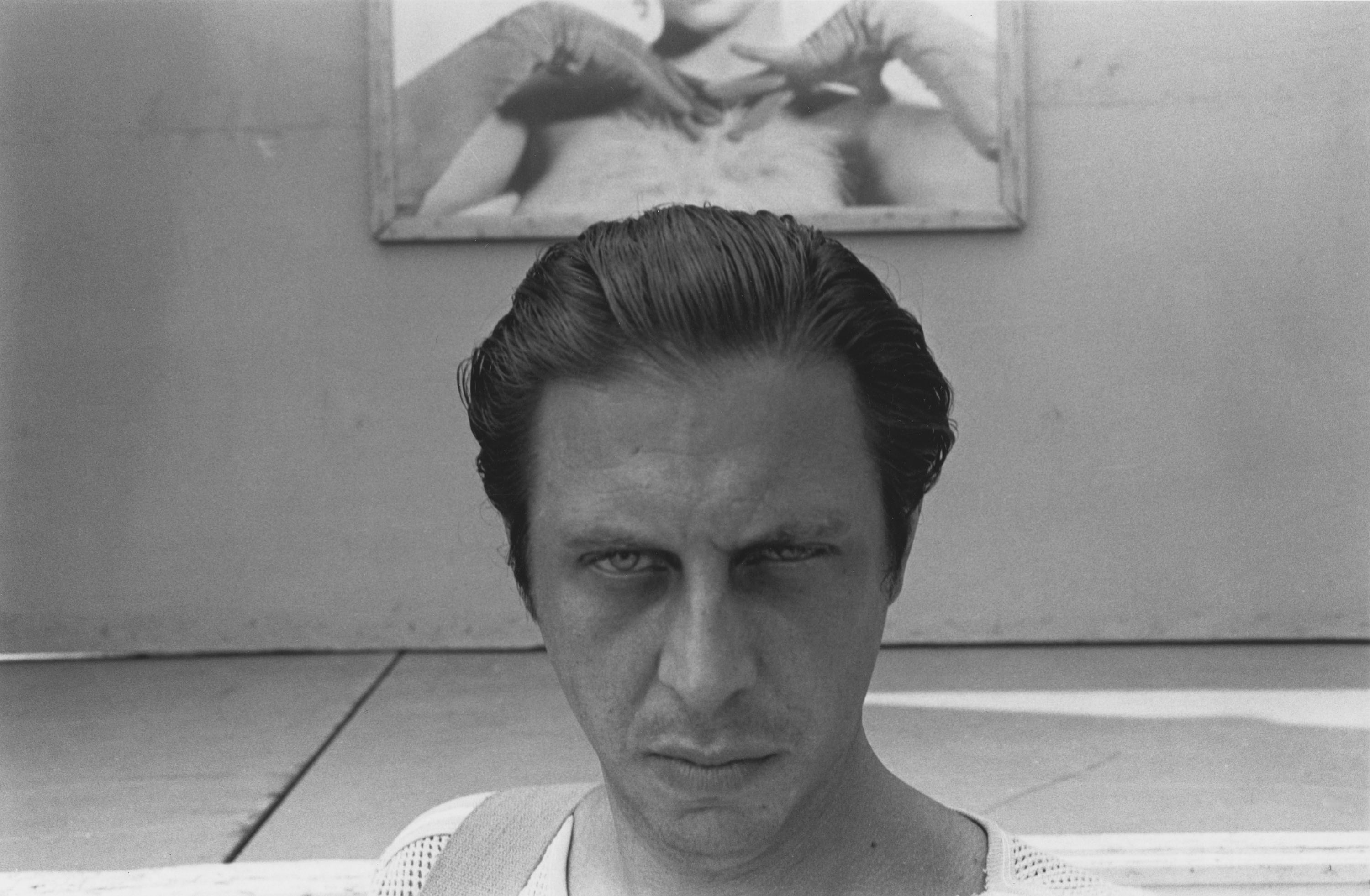 All eyes on Paris Photo 2025 – focus on our highlights
All eyes on Paris Photo 2025 – focus on our highlightsThe world's most important international photography fair brings together iconic and emerging names, galleries large and small – and there’s much to covet
-
 Ten things to see and do at Art Basel Paris 2025
Ten things to see and do at Art Basel Paris 2025Art Basel Paris takes over the city from 24-26 October. Here are the highlights, from Elmgreen & Dragset to Barbara Kruger and Dash Snow
-
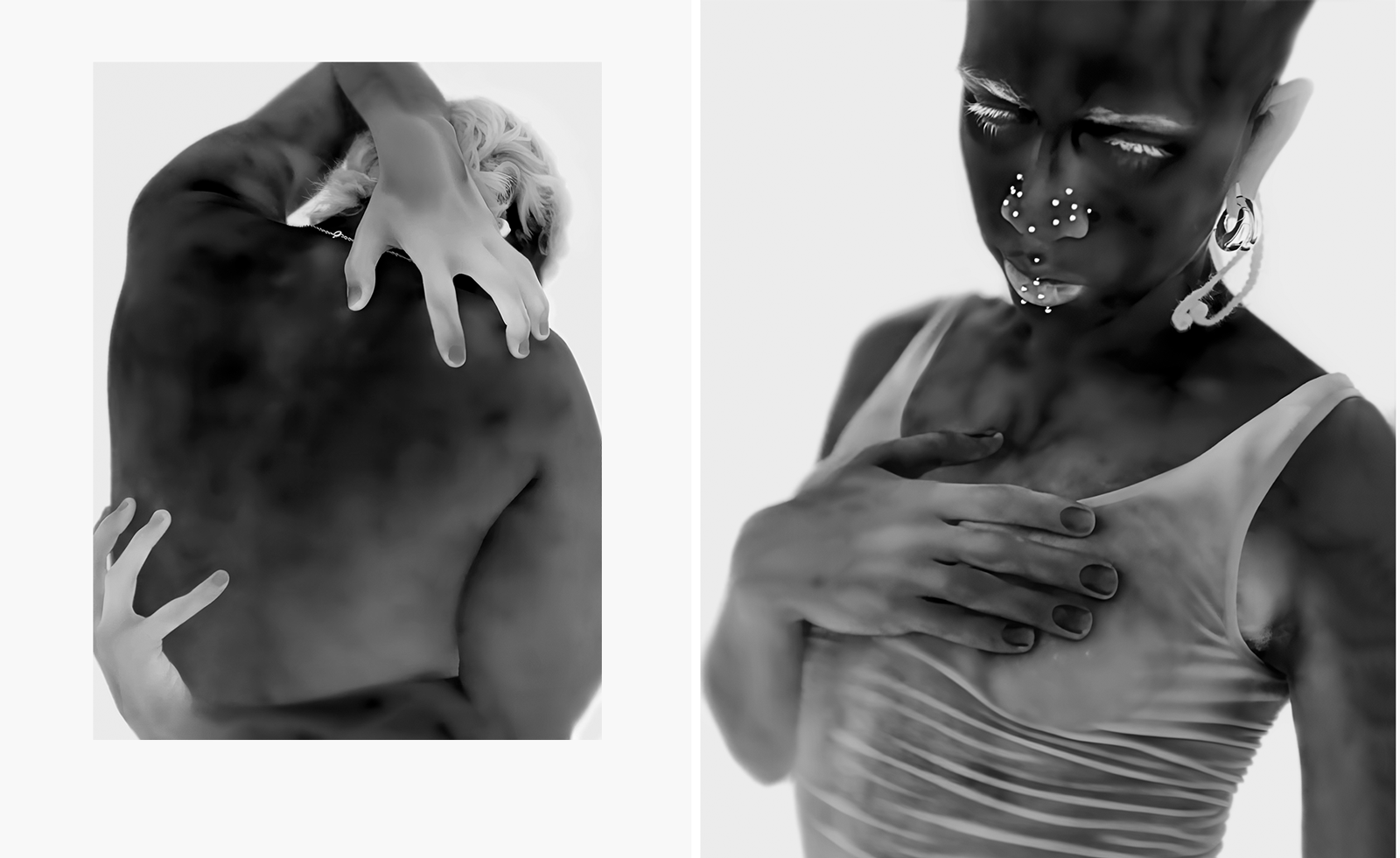 Yulia Mahr digs beneath the skin in her modern update of classic Greek statues in Paris
Yulia Mahr digs beneath the skin in her modern update of classic Greek statues in ParisIn 'The Church of Our Becoming', on view at the Courtyard at Dover Street Market Paris, Yulia Mahr celebrates real human bodies
-
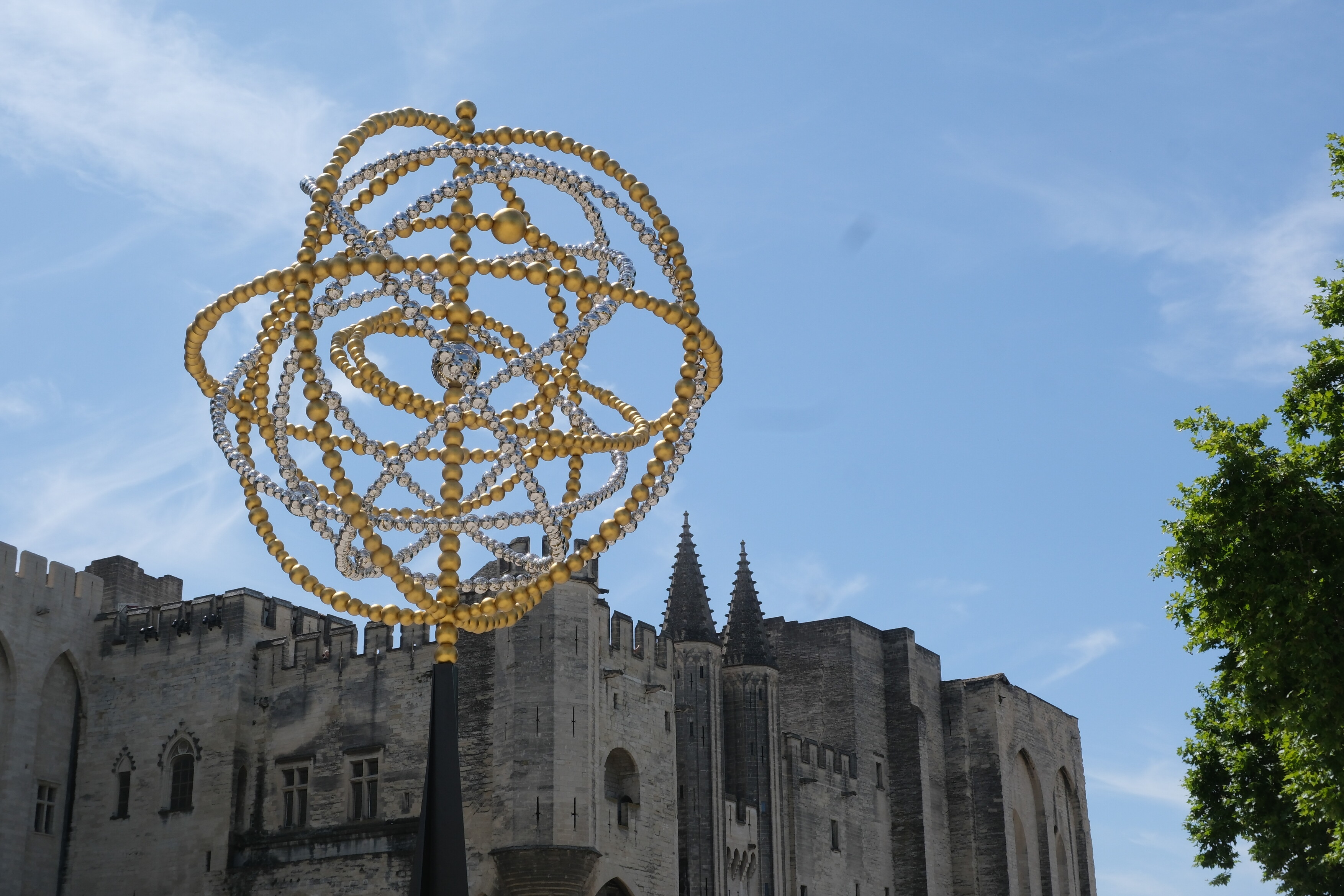 Jean-Michel Othoniel takes over Avignon for his biggest ever exhibition
Jean-Michel Othoniel takes over Avignon for his biggest ever exhibitionOriginally approached by Avignon to mark their 25th anniversary as the European Capital of Culture, Jean-Michel Othoniel more than rose to the challenge, installing 270 artworks around the city
-
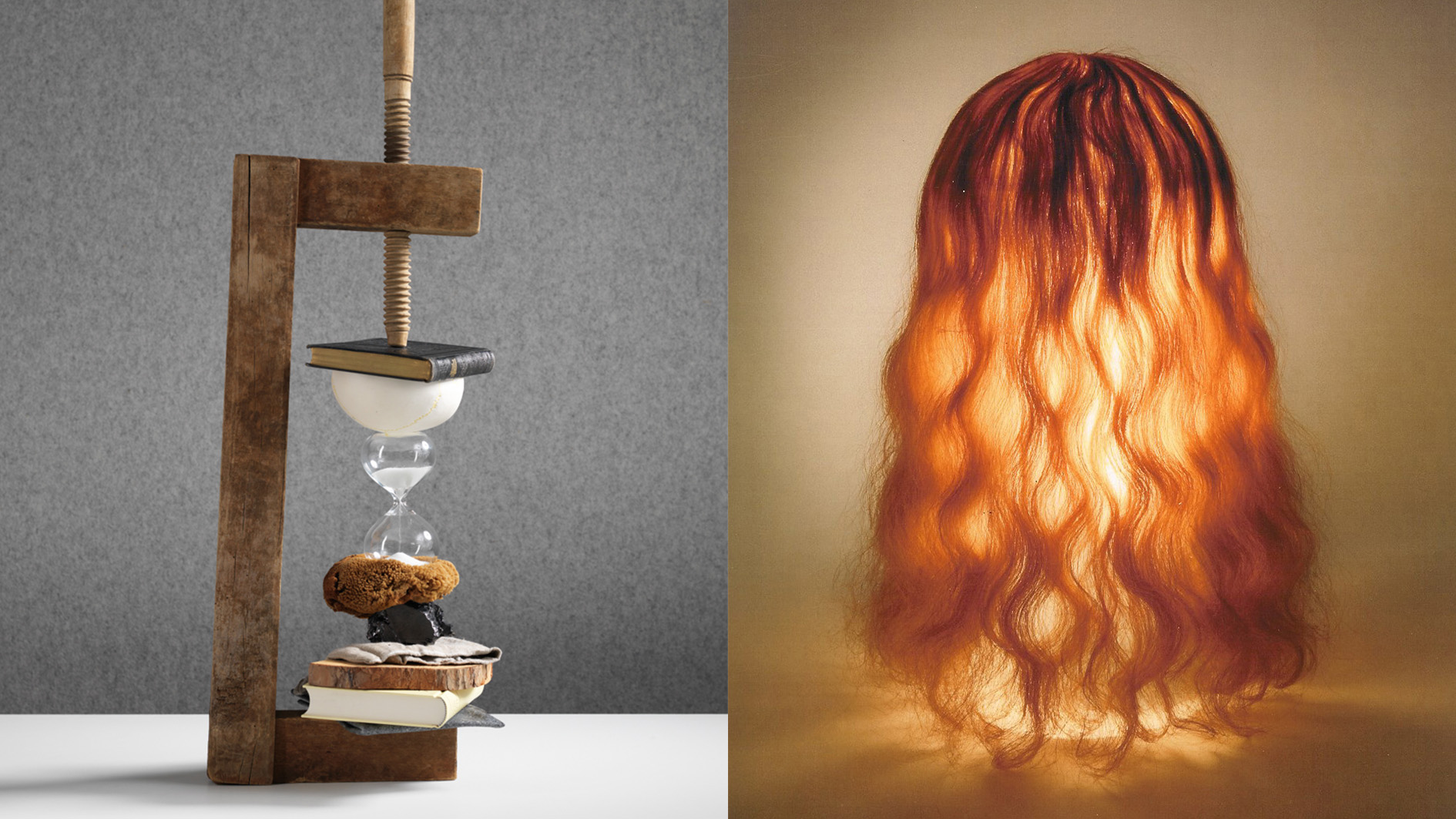 Rolf Sachs’ largest exhibition to date, ‘Be-rühren’, is a playful study of touch
Rolf Sachs’ largest exhibition to date, ‘Be-rühren’, is a playful study of touchA collection of over 150 of Rolf Sachs’ works speaks to his preoccupation with transforming everyday objects to create art that is sensory – both emotionally and physically
-
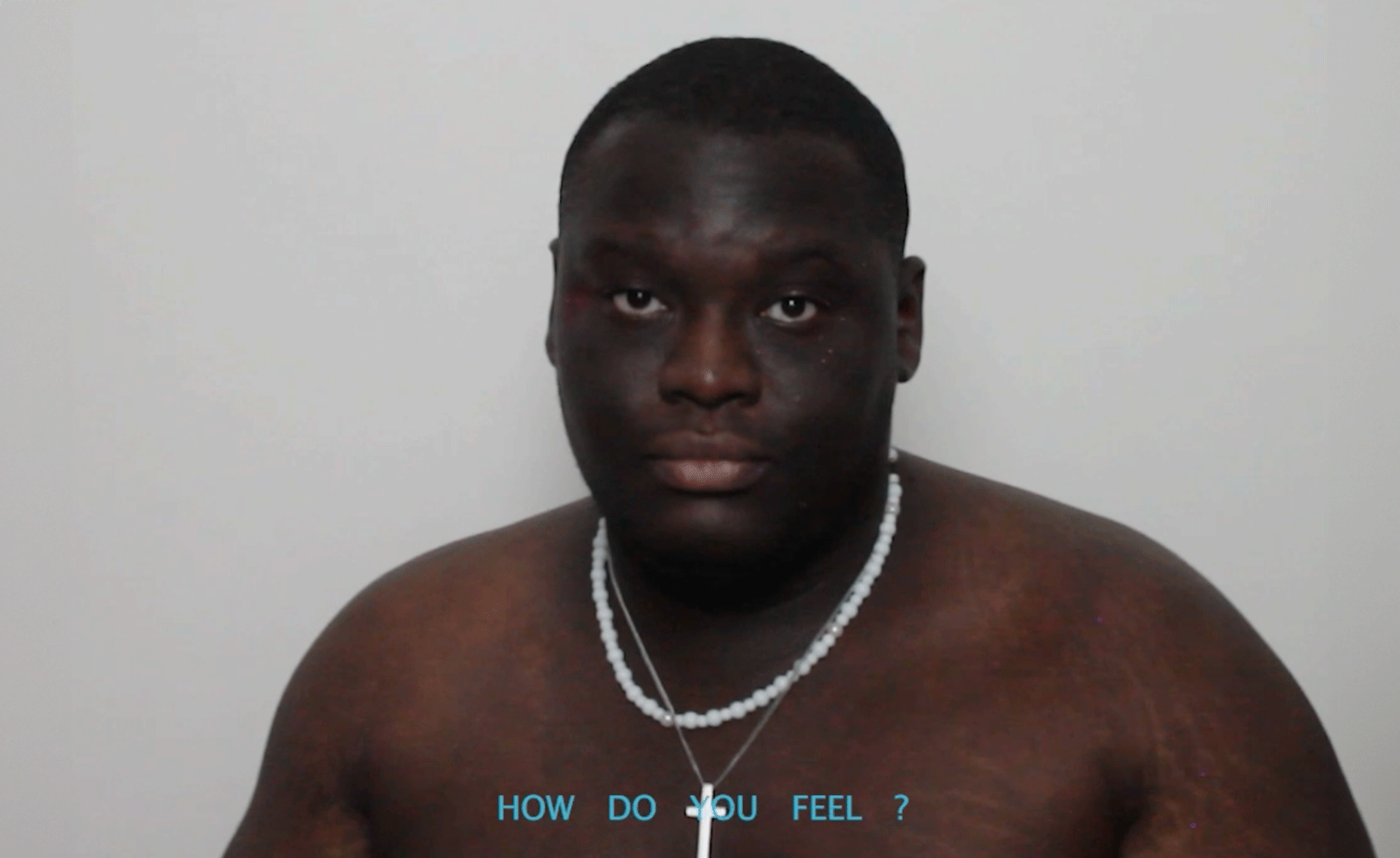 Joel Quayson’s winning work for Dior Beauty at Arles considers the theme ‘Face-to-Face’ – watch it here
Joel Quayson’s winning work for Dior Beauty at Arles considers the theme ‘Face-to-Face’ – watch it hereQuayson, who has won the 2025 Dior Photography and Visual Arts Award for Young Talents at Arles, imbues his winning work with a raw intimacy